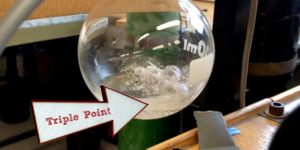Narcolepsy, a chronic central nervous system disorder that occurs when the brain cannot normally regulate cycles of sleep and being awake, causes episodes of sleepiness and sleep unpredictably during the day. One in 3,000 Americans suffers from it. Onset is between ages 10 and 25, and the disease is then permanent. Besides the disruption to normal life caused by sudden sleep, there is loss of muscle tone, slurred speech, difficulty in concentrating, and even hallucinations. Narcolepsy's mechanism has been unknown, and there is currently no treatment or cure.

"Narcolepsy is interesting, because although it has been considered to be strictly genetic, it is induced by environmental factors, such as a burst of laughter, or stress, said researcher Dr. Yehuda Shoenfeld of Tel Aviv University. "Narcolepsy is devastating to those suffering from it and debilitating to children in particular. There is no known therapy to treat it."
Dr. Shoenfeld and his team got interested in narcolepsy when there was an upsurge of narcolepsy diagnoses in Finland in 2009 after there was a public campaign to distribute the H1N1 flu vaccine. After the campaign, the occurrence of narcolepsy went up to 16 times the average. Now a study in the journal Pharmacological Research by Dr. Shoenfeld, his student Maria-Teresa Arango, and collaborator Dr. Makato Honda of the Tokyo Metropolitan Institute of Psychiatry, suggests that an autoimmune disorder, attacking a particular type of neuron in the brain, may be the cause of narcolepsy.
Orexin neurons are known to regulate sleep and wakefulness; granules called tribbles are sites of orexin concentration in the brain. Research suggested that an apparent autoantibody attacks tribbles. According to Dr. Shoenfeld, "In patients and animals that develop narcolepsy, we have seen an evident depletion of orexin in the brain and therefore a lack of balance, and later attacks of narcolepsy. Why is the orexin disappearing? We think the culprit is an autoimmune reaction -- the binding of autoantibodies to the tribble granules to destroy them."
Suspected antibodies were isolated, injected into mice, and then sleep patterns observed. "What we saw was an increased number of sleep attacks and irregular patterns of sleep. Mice fall asleep like dogs, circling around before going to sleep. Suddenly, in this experiment, the mice just dropped off to sleep and then, just two minutes later, woke up as though nothing had happened," Dr. Shoenfeld said.
"Our hope is to change the perception and diagnosis of narcolepsy, to define it as the 81st known autoimmune disease, because a better understanding of the mechanism will lead to better treatment, and maybe one day a cure, " Dr. Shoenfeld concluded.









